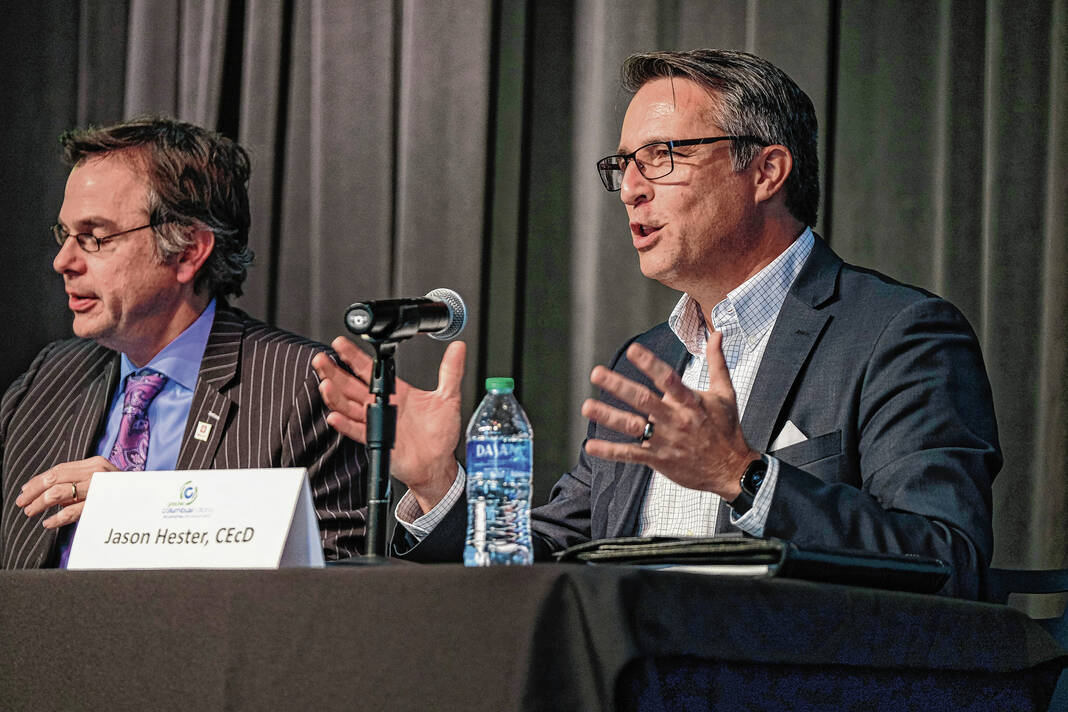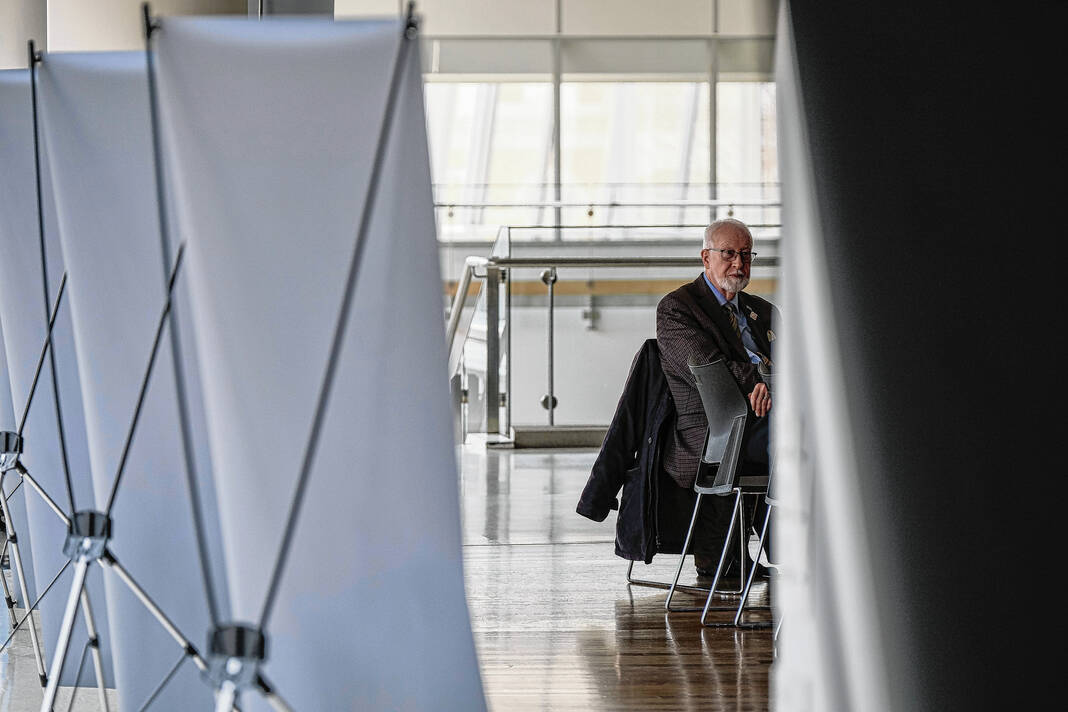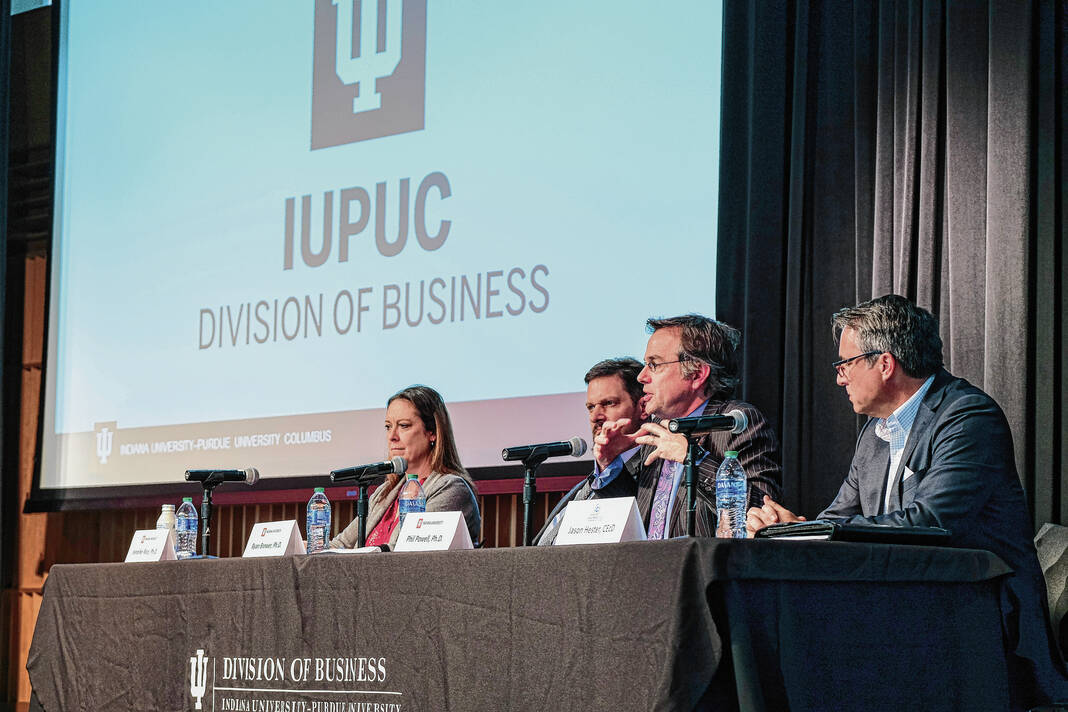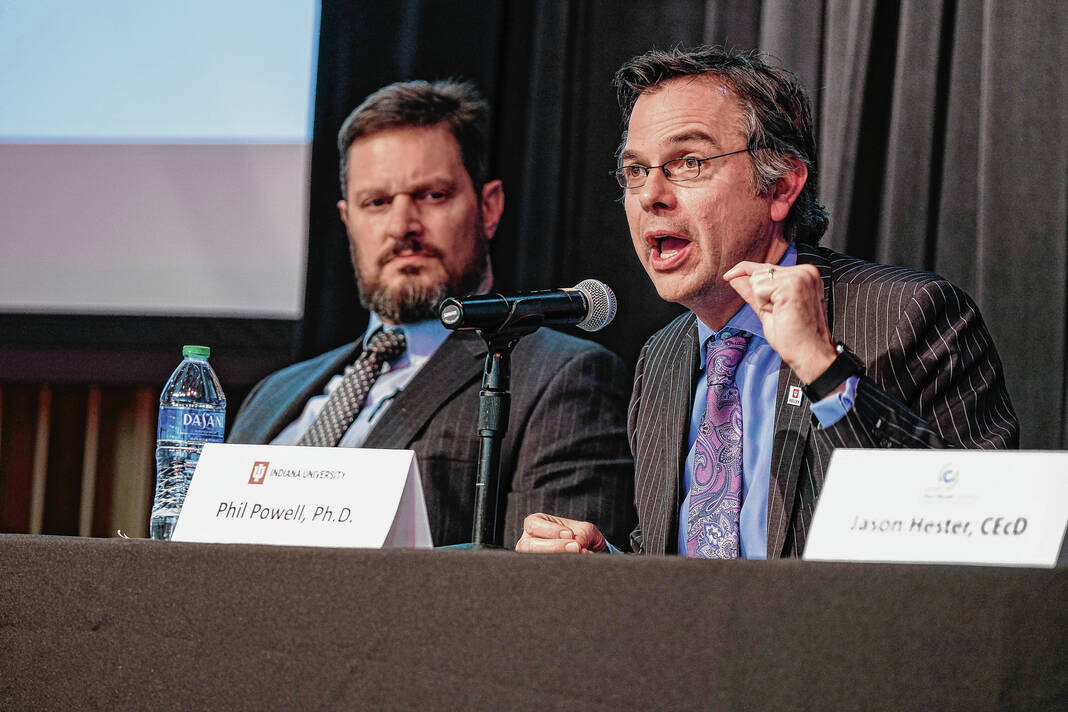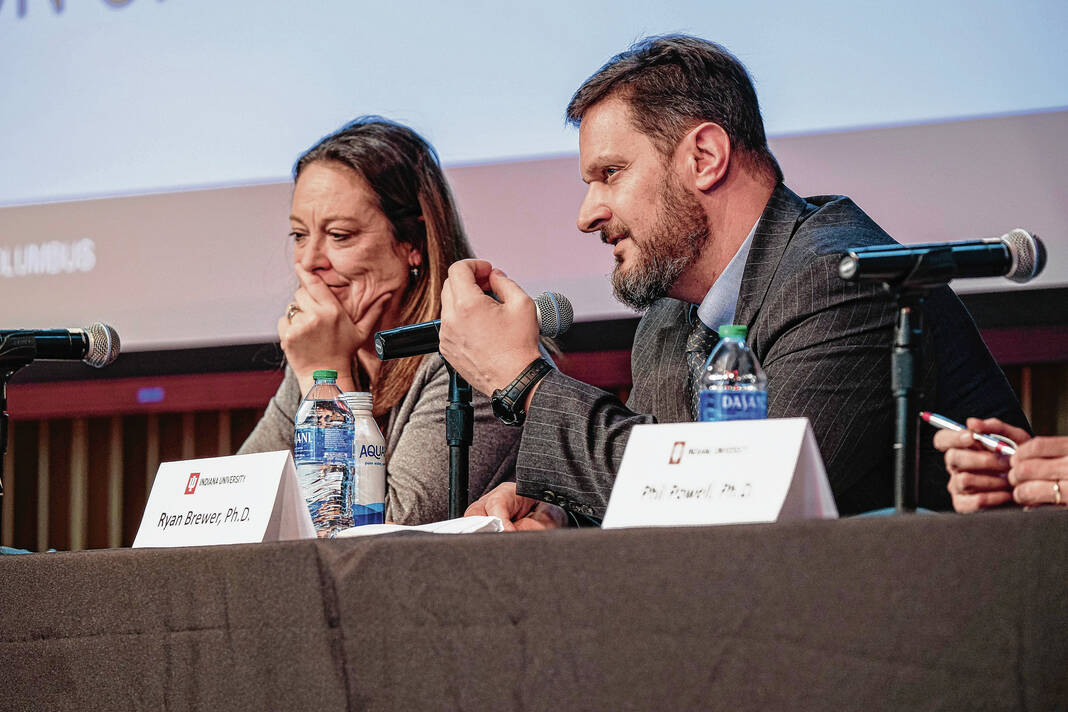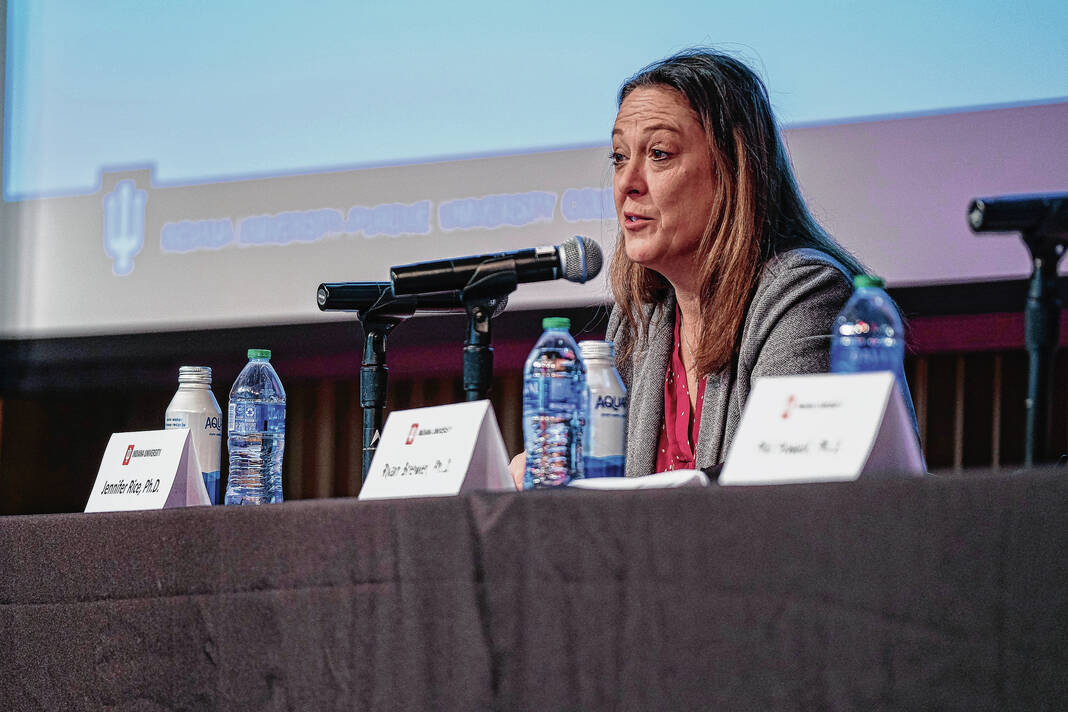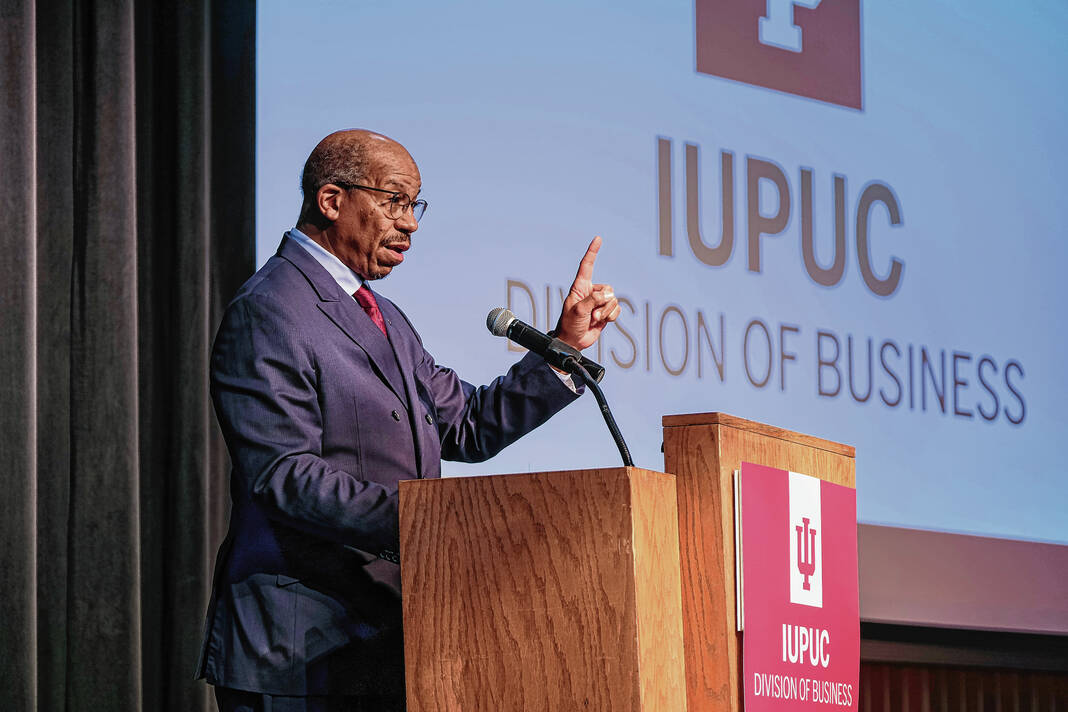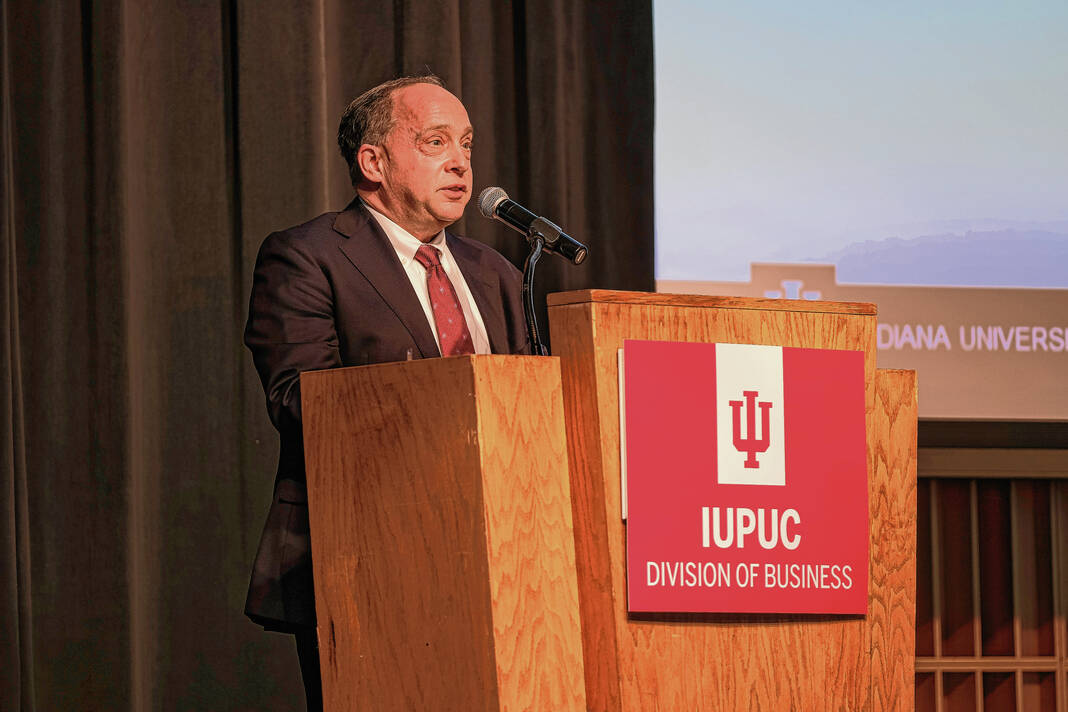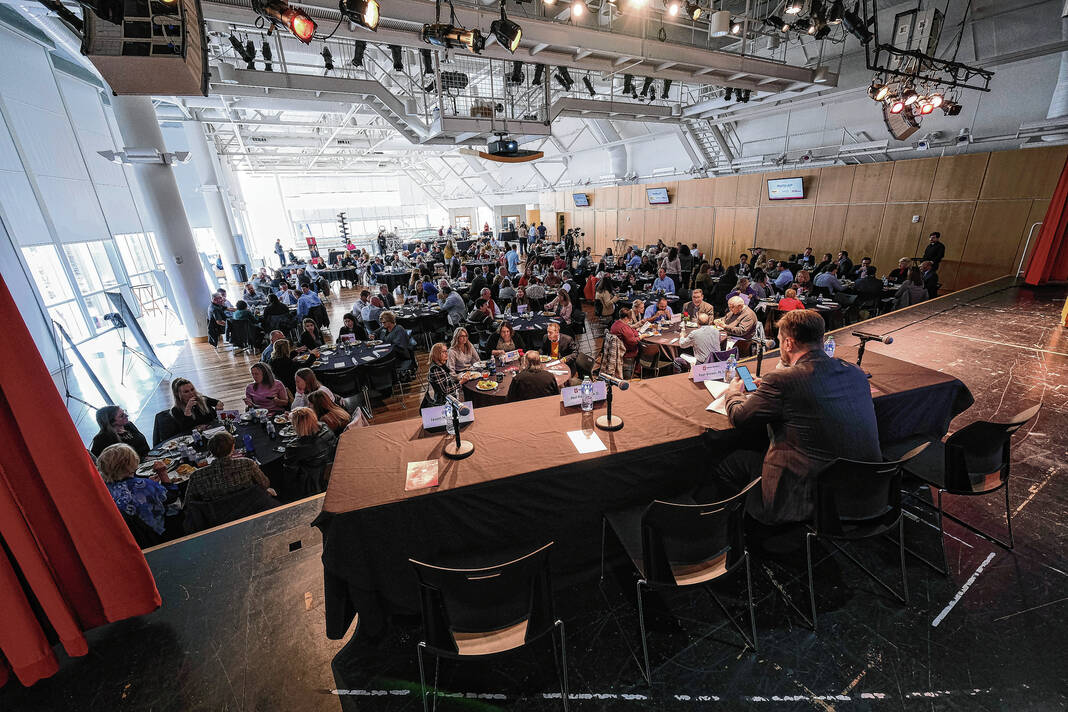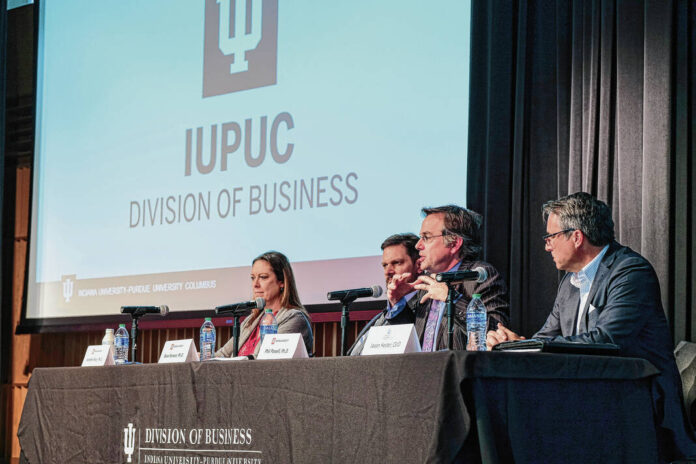
Mike Wolanin | The Republic Panelists Jennifer Rice, from left, Ryan Brewer, Phil Powell and Jason Hester participate in the annual economic outlook forum at The Commons in downtown Columbus, Ind.,Monday, Nov. 14, 2022.
Local and state economic experts are predicting an economic slowdown in the coming year, though the level of severity will depend on a number of different factors.
Or, as Indiana University Kelley School of Business senior lecturer Jennifer Rice put it, her outlook is optimistic “but with a little bit of pessimism.”
The annual Indiana Business Outlook Panel was held at The Commons on Monday, with experts from Indiana University and Columbus presenting their predictions for 2023 — a year that holds the most “uncertain outlook in a half century,” according to IU’s experts.
“The overall conclusion is that there’s likely to be some form of recession in 2023,” said Rice. “It just depends: Are we going to be on the optimistic end, or are we going to be on the pessimistic end?”
The Kelley School has presented the annual Business Outlook forecast to communities around the state since 1972, basing predictions on research from its Indiana Business Research Center.
This year’s Business Outlook tour includes visits to nine cities and began with Bloomington on Nov. 10. At each stop, Kelley School faculty and local panelists provide 2023 economic forecasts at a global, national, state and local level. Their insights include economic trends expected to occur in the coming year, as well as the outlook for financial markets.
The Columbus panel was sponsored by the Columbus Area Chamber of Commerce, Centra Credit Union, IUPUC’s business division, the Indiana Business Research Center and the Kelley School of Business. Proceeds from the local event support scholarships for IUPUC business students.
Kelley School officials stated their forecast for 2023 utilized two sets of assumptions to create two different forecasts for the year. One is optimistic; the other is “moderately pessimistic.” Continued consumer spending and having more workers to enter the labor force would be key factors in improving economic outcomes.
“We think output growth at best will be weak in 2023, and negative growth for part of the year is a strong possibility,” said Kyle Anderson, clinical assistant professor of business economics and faculty chair of the Evening MBA Program, in an official statement. “Demand will diminish across the economy. A key will be the extent of the impact on consumer spending. If consumption holds up, it will cushion any decline. If not, a recession will be unavoidable.”
According to IU’s report, spending on consumer goods in the third quarter of 2022 was 15.2% higher than pre-pandemic levels, while services were only up just 3.4%. If this split were to narrow, Kelley economists would be concerned about how goods-producing industries would deal with the sharp decline in sales.
This could also have a more significant impact on Indiana, where the economy remains reliant on durable goods manufacturing, said Ryan Brewer, associate professor of finance at IUPUC and co-author of the state forecast. The sector accounts for 16% of the state’s gross domestic product.
Rising interest rates and other factors could cause a drop in demand for products, and Kelley School economists also expect unemployment in Indiana to rise to between 4.1% and 5.5%.
“It would appear that for 2023, Indiana as a manufacturing leader will feel the pressure of the Federal Reserve tightening cycle, and ultimately sustain a flat or relatively flat trajectory in terms of output, while confronting a real possibility of shedding jobs,” said Brewer in IU’s report. “If inflation remains high for the next several months, Fed tightening will likely continue, demand for durable goods would continue to decelerate, and job losses in Indiana would likely become more severe.”
In the financial forecast, Brewer recommended those in the stock market consider “rebalancing” their portfolio going forward, possibly diversifying into other areas such as socially responsible investing or energy.
Brewer said local residents will be able to tell if we are heading to a “hard landing” on the economy by holiday season spending and consumerism, saying individual households as a whole will determine whether the economy next year lands softly or hits hard (into recession).
Other risks for the 2023 economic outlook include the continuing war in Ukraine, how central banks in developed countries handle their fiscal policies and tightening financial conditions as interest rates rise.
In discussing the state outlook, Phil Powell, academic director of the Indiana Business Research Center, noted that talent attraction is a major challenge for both Indiana and the Columbus area. However, he added that the Indiana General Assembly has an opportunity to address the problem by using some of the state’s surplus funds to invest in education, infrastructure, placemaking and public health, which would help make regions more competitive.
Jason Hester, president of the Greater Columbus Economic Development Corp., presented the local outlook, which included insights from himself, Brewer and Steve Mohler from IUPUC’s Division of Business.
“So first, the upside,” said Hester. “With some-8,000 local employees in our region and their global headquarters just a block away from us here in downtown Columbus, we first consider that Cummins is positioned to experience a solid year of sales. And we expect them to be able to absorb all local, or all input cost increases and realize profit margins comparable to pre-inflation periods. Importantly, our forecast does not expect substantive changes to their local headcount.”
Additionally, U.S. light vehicle sales are expected to rise, and the Inflation Reduction Act includes incentives for companies to invest in clean energy. Furthermore, inflation may encourage individuals who have left the workforce to re-enter it, which could ease the burden on the labor market and encourage employers to create more jobs.
However, there is also some potential bad news to go with the good. Hester reiterated that decreased consumer spending could lead to less demand for durable goods produced by local employers.
And while Columbus has a high labor force participation rate at 66% and a low unemployment rate, Hester said that local GDP growth may be “hindered” by a lack of available workers if the unemployment rate remains low and labor force numbers do not increase.
Hester said that he and his co-authors formulated three possible outcomes for Columbus, which ranged from a soft, moderate or hard “landing” for the local economy.
They believe moderate to be the most likely outcome. Under this scenario, Columbus would experience declining real GDP between -1% to -4%. Inflationary pressures would motivate up to 1,500 people to re-enter the local job market, and employers would fill open positions but hold off on expansions. Unemployment would increase to between 3%-4% due to the number of job seekers outpacing employment gains.
“High inflation and rising interest rates, continued supply chain challenges, tightening of local business investment and a continued tight labor market are the biggest challenges to local GDP growth,” said Hester. “These headwinds, though, can be countered if consumer spending holds, as has been discussed, and demand in particular for light vehicles and other locally produced products remain.”


